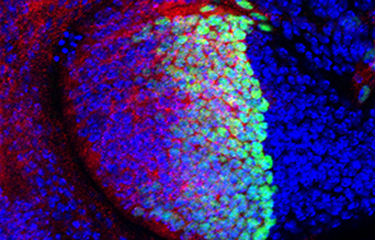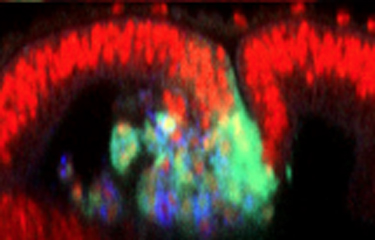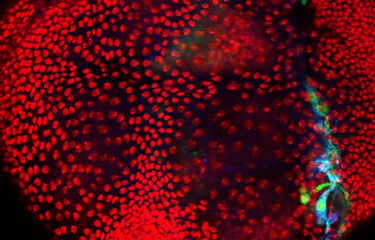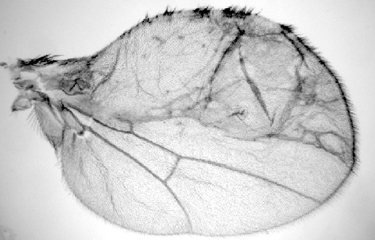
-
Careers • News • Contact us •
- Login
- Français
Creating new
knowledge
Exploring new avenues to develop tomorrow’s medical knowledge through an approach that integrates basic and clinical research
Our research units are led by principal investigators who collaborate in a spirit of collegiality and with the vision of bridging the gap between research and patients. They train the next generation of scientists and are independent and creative minds who work tirelessly to improve health.
Current research
"Our work aims to determine how the local exchange of signals between cells contributes to the normal growth and organization of epithelial tissues."
David Hipfner, research director
Epithelial Cell Biology
Epithelial cells are a fundamental component of animal tissues. These highly specialized cells are tightly joined together to form organized epithelial sheets. Epithelia act as boundaries, lining the inner and outer surfaces of organs and the interfaces between tissues. Epithelial cells serve many essential functions including protection (e.g. skin), secretion (e.g. various glands) and absorption (e.g. in the intestine), and they provide surfaces for gas exchange (e.g. in the lungs and blood vessels). Given their widespread importance, there is a great deal of interest in understanding how epithelial tissues are normally formed and maintained.
The Epithelial Cell Biology Research Unit's goal is to provide insights into the basic mechanisms that are critical for the establishment, growth, and shaping of epithelial tissues during embryonic development. Given the central role of de-regulated cell proliferation, survival, and epithelial organization in cancer, members of the laboratory also expect to gain a better understanding of mechanisms involved in tumour formation and metastasis in humans.
| Team |
|
| Affiliations |
|
| Degrees and experience |
|
Mechanisms controlling the pattern and growth of epithelial tissues
Drosophila – an excellent model system for studying tissue growth and patterning
The fruit fly Drosophila melanogaster offers a number of advantages that have made it one of the most popular model organisms for genetic studies of development and disease. Despite our differences, many of the processes and genes important for human development are conserved in Drosophila. We focus on development of imaginal discs, which are small epithelial sacs formed in the embryo that grow rapidly to form structures like the eyes, wings, and legs. Because of their simple structure, rapid growth, and easy accessibility, the imaginal discs are an ideal system for studying how growth and patterning of epithelial tissues are controlled.
Pattern
Hedgehog signalling plays a central role in organizing most embryonic tissues and is misregulated in many cancers. We found the G protein-coupled receptor kinases (GRKs) play an important role in controlling the activity of this pathway, with GRK mutant flies showing an abnormal wing pattern. We have linked this to a broader misregulation of G protein-coupled receptors and are working to determine the complex ways in which this affects Hedgehog pathway output.
Growth
We’ve shown that a protein kinase called Slik is capable of accelerating tissue growth in Drosophila, similar to some tumour-promoting human oncogenes. Slik mediates a local exchange of signals between cells that causes receiving cells to grow and divide. We have identified several factors that control this activity of Slik, and are working to understand how they do so and by what mechanism Slik-expressing cells stimulate neighbouring cells to grow.
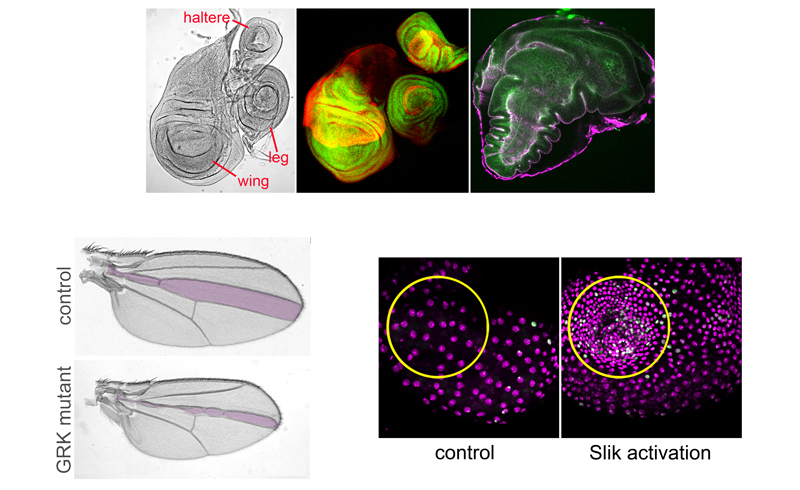
Important Discoveries
|
2021 Extensive crosstalk of G protein-coupled receptors with the Hedgehog signalling pathway |
|
2020 STRIPAK regulates Slik localization to control mitotic morphogenesis and epithelial integrity |
|
2015 Regulation of Catalytic and Non-catalytic Functions of the Drosophila Ste20 Kinase Slik by Activation Segment Phosphorylation |
|
2014 A broadly conserved G protein-coupled receptor kinase phosphorylation mechanism controls Drosophila smoothened activity |
Tools
| Press review |
| Press review |
| Grants |
| Recognitions and honors |
Join the
group Research
Available positions
Ongoing clinical studies
Research Partners


Join the
research group
514 987-5508
david.hipfner@ircm.qc.ca
Life in the
laboratory

© Montreal Clinical Research Institute, Année.All rights reserves. | Privacy policy | Terms of use | Web site by Agence Riposte


